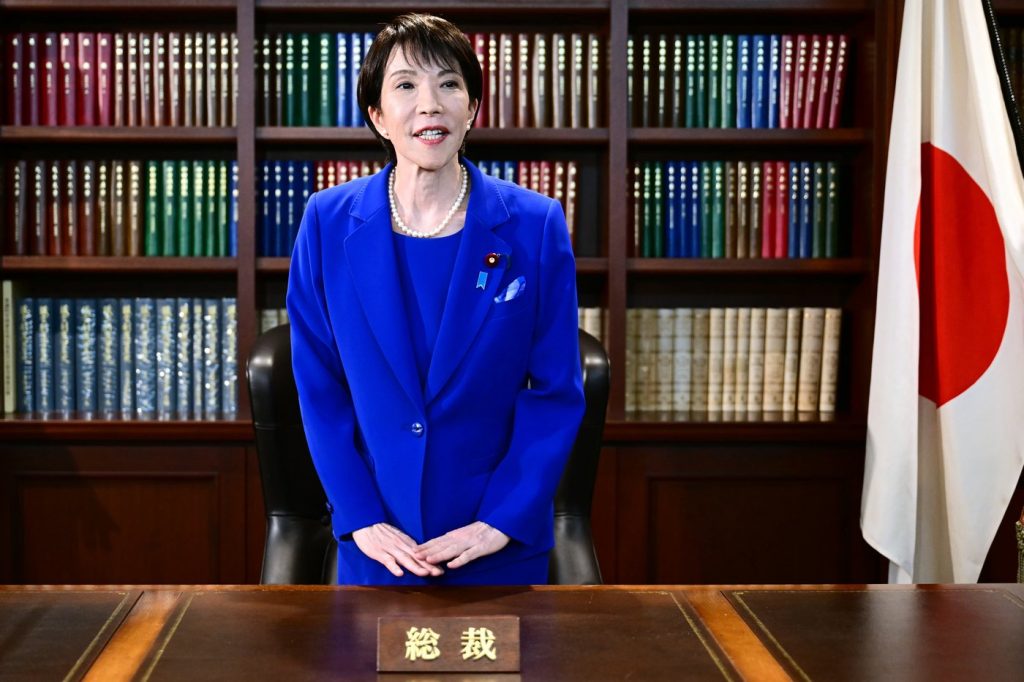TOKYO (AP) — Sanae Takaichi, the leader of Japan's ruling Liberal Democratic Party (LDP), is poised to make history as the first female prime minister of Japan. Her ascent comes after the Komeito party, a vital coalition partner for the LDP, severed ties after a 26-year partnership due to concerns over Takaichi's ultraconservative stance and the LDP's handling of slush fund scandals. Following her election as LDP president, Takaichi found herself in a precarious position, requiring swift action to secure votes for her parliamentary bid set for Tuesday.
Takaichi, 64, is likely to replace Prime Minister Shigeru Ishiba after a drawn-out three-month political power vacuum following the LDP's defeat in the July parliamentary election. With the Komeito party's departure, Takaichi's coalition fell into disarray, necessitating her collaboration with the conservative Japan Innovation Party (Ishin no Kai) as a stopgap solution. However, the long-term viability of this partnership remains uncertain.
Although Takaichi's potential premiership represents a breakthrough for female representation in Japanese politics, many women express skepticism. Sociologist Chizuko Ueno articulated that while a female prime minister would enhance Japan's gender equality image, it does not guarantee a kinder political climate for women. Takaichi's policies, which include support for male-only succession in the imperial family and opposition to same-sex marriage, have led to criticism from those advocating for women's rights and progressive policies.
Upon her prospective success in the parliamentary vote, Takaichi would immediately form her Cabinet and deliver a policy address later that week. Her administration is expected to mirror the economic and security policies of her mentor, former Prime Minister Shinzo Abe, but questions loom regarding her capacity to navigate pressing challenges, such as rising inflation and Japan's declining population.
Takaichi, a staunch advocate for military expansion, has already committed to significantly increasing Japan's defense budget to 2% of GDP by 2027 amidst ongoing geopolitical tensions with North Korea and China. Negotiations with U.S. President Donald Trump are imminent, which may further complicate her leadership as Trump could demand increased military spending from Japan, potentially reaching NATO benchmarks of 5% of GDP.
The combination of Takaichi's need to maintain stability within her coalition while appealing to opposition parties poses a significant dilemma for her leadership. Despite efforts to gain insights from various smaller opposition groups, including right-wing factions like the Sanseito, political analysts contend that her ability to enact meaningful change will be limited.
The power dynamics within the LDP are also critical to Takaichi’s ascension. Her alliance with the influential former Prime Minister Taro Aso, appointed as LDP vice president, highlights the intricate web of political maneuvering within the party. However, political observers predict that a Takaichi government may face early elections due to weak coalition support and the necessity to regain a lower house majority.
Amidst the broader political landscape, the emergence of multiparty politics in Japan signals a shift away from LDP dominance. With rising voter disillusionment and diverse opposition parties vying for influence, Takaichi's administration must navigate an environment fraught with challenges. Experts emphasize the need for a cohesive approach to coalition governance to foster a stable political future for Japan.
In summary, Takaichi's prospect as Japan's first female prime minister comes laden with both opportunities and profound challenges. As she prepares for potential diplomatic engagements and domestic policy issues, the effectiveness of her leadership will lie in her ability to forge alliances while managing the complexities of modern Japanese politics.










